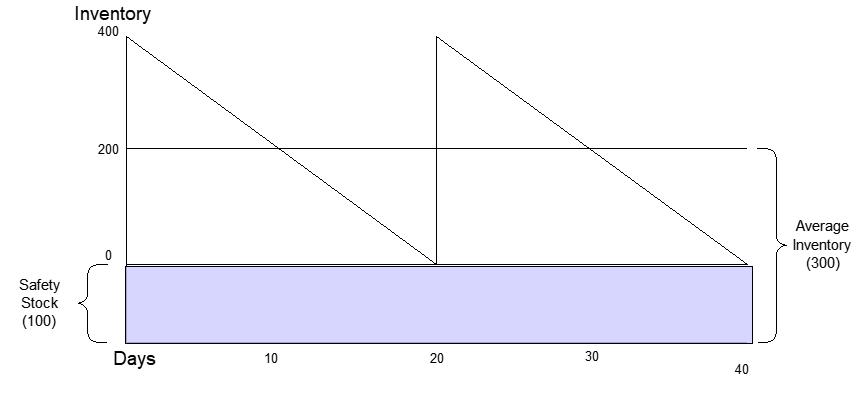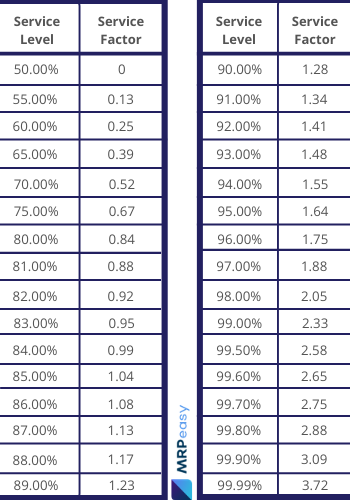
In addition, ERP systems use established formulas to help calculate appropriate levels of safety stock based on the previously developed production plans. By creating more accurate and dynamic forecasts, a company reduces its chance of producing insufficient inventory for a given period, thus should be able to reduce the amount of safety stock required. An ERP module such as this can help a company develop highly accurate and dynamic sales forecasts and sales and operations plans. Most ERP systems provide a type of production planning module. The lower the service level, the lower the requirement for safety stock.Īn enterprise resource planning system (ERP system) can also help an organization reduce its level of safety stock. ĭue to the cost of safety stock, many organizations opt for a service level-led safety stock calculation for example, a 95% service level could result in stockouts, but is at a level that is acceptable to the company. In a lean supply environment, lead times are reduced, which can help minimize safety stock levels, thus reducing the likelihood and impact of stockouts. Various methods exist to reduce safety stock these include better use of technology, increased collaboration with suppliers, and more accurate forecasting. In addition, time-sensitive goods such as food, drink, and other perishable items could spoil and go to waste if held as safety stock for too long. As such, its cost (in both material and management) is often seen as a drain on financial resources that results in reduction initiatives. Safety stock is used as a buffer to protect organizations from stockouts caused by inaccurate planning or poor schedule adherence by suppliers. By absorbing these variations, safety stock improves the customer-service level.Ĭreating a safety stock will also delay stockouts from other variations, like an upward trend in customer demand, allowing time to adjust capacity. Indeed, production planning is based on a forecast, which is (by definition) different from the real demand. The main goal of safety stocks is to absorb the variability of customer demand. Safety stocks are mainly used in a "make-to-stock" manufacturing strategy, which is employed when the lead time of manufacturing is too long to satisfy the customer demand at the right cost/quality/waiting time. As a result, finding the right balance between too much and too little safety stock is essential.


Too little safety stock can result in lost sales and, in the thus a higher rate of customer turnover. In addition, products that are stored for too long a time can spoil, expire, or break during the warehousing process. Too much safety stock can result in high holding costs of inventory. The amount of safety stock that an organization chooses to keep on hand can dramatically affect its business.

That can be extremely important for companies with a smaller financial cushion or those trying to run on lean manufacturing, which is aimed towards eliminating waste throughout the production process. However, a common strategy is to try to reduce the level of safety stock to help keep inventory costs low once the product demand becomes more predictable. With an MRP worksheet, a company can judge how much it must produce to meet its forecasted sales demand without relying on safety stock. The less accurate the forecast, the more safety stock is required to ensure a given level of service. With a new product, safety stock can be used as a strategic tool until the company can judge how accurate its forecast is after the first few years, especially when it is used with a material requirements planning (MRP) worksheet. It acts as a buffer stock in case sales are greater than planned and/or the supplier is unable to deliver the additional units at the expected time. Safety stock is an additional quantity of an item held in the inventory to reduce the risk that the item will be out of stock. Safety stock is held when uncertainty exists in demand, supply, or manufacturing yield, and serves as an insurance against stockouts. Adequate safety stock levels permit business operations to proceed according to their plans. Safety stock is a term used by logisticians to describe a level of extra stock that is maintained to mitigate risk of stockouts (shortfall in raw material or packaging) caused by uncertainties in supply and demand.


 0 kommentar(er)
0 kommentar(er)
